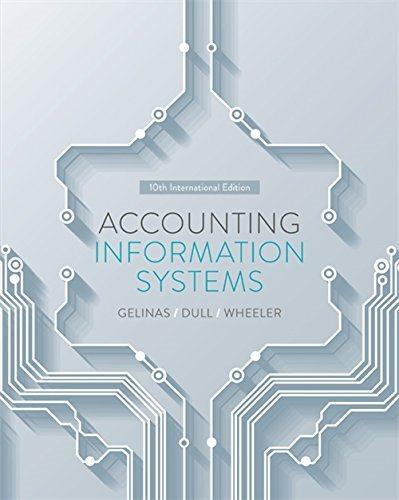Answered step by step
Verified Expert Solution
Question
1 Approved Answer
CASE 1.1 Metro-Goldwyn-Mayer Studios, Inc. v. Grokster, Ltd. 545 U.S. 913 (2005) Copyright Infringement? Really, It's Just a Little Peer-to-Peer File Sharing FACTS Grokster, Ltd.,


CASE 1.1 Metro-Goldwyn-Mayer Studios, Inc. v. Grokster, Ltd. 545 U.S. 913 (2005) Copyright Infringement? Really, It's Just a Little Peer-to-Peer File Sharing FACTS Grokster, Ltd., and StreamCast Networks, Inc. (respon- dents/defendants) distribute free software products that allow computer users to share electronic files through peer-to-peer networks. Universities, govern- ment agencies, corporations, and libraries use this technology Grokster and StreamCast do not know when partic- ular files are copied. However, MGM had a statistician do a systematic search of electronic files, and his study showed that nearly 90 percent of the files available for download on the FastTrack system were copyrighted works. Per the Court's opinion, the probable scope of copyright infringement is staggering." After Napster was sued by copyright holders for facilitation of copyright infringement, A&M Records, Inc. v. Napster, Inc., 114 F. Supp. 2d 896 (N.D. Cal. 2000), aff'd in part, rev'd in part, 239 F.3d 1004 (C.A.9 2001), StreamCast gave away a software program known as OpenNap, designed as compatible with the Napster program and open to Napster users for download- ing files from other Napster and OpenNap users' computers. The OpenNap program was engineered "to leverage Napster's 50 million user base." Grokster and StreamCast received no revenue from users, who obtainedmor the software itself for nothing. The District Court held that those who used the Grokster and Morpheus software to download copy- righted media files directly infringed MGM's copy- rights, but granted summary judgment in favor of Grokster and StreamCast as to any liability arising from distribution of the then current versions of their soft- ware. The Court of Appeals affirmed. MGM appealed. JUDICIAL OPINION SOUTER, Justice The question is under what circumstances the distribu- tor of a product capable of both lawful and unlawful use is liable for acts of copyright infringement by third parties using the product. When a widely shared service or product is used to commit infringement, it may be impossible to enforce rights in the protected work effectively against all direct infringers, the only practical alternative being to go against the distributor of the copying device for sec- ondary liability on a theory of contributory or vicarious infringement [T]his Court has dealt with secondary copyright infringement in only one recent case. In Sony Corp. v. Universal City Studios, 464 U.S., at 434, this Court addressed a claim that secondary liability for infringe- ment can arise from the very distribution of a commer- cial product. On those facts, with no evidence of stated or indi- cated intent to promote infringing uses, the only con- ceivable basis for imposing liability was on a theory of contributory infringement arising from its sale of VCRs to consumers with knowledge that some would use them to infringe. But because the VCR was "capable of com- mercially significant noninfringing uses," we held the manufacturer could not be faulted solely on the basis of its distribution. Because the Circuit found the StreamCast and Grokster software capable of substantial lawful use, it concluded on the basis of its reading of Sony that neither company could be held liable, since there was no show- ing that their software, being without any central server, afforded them knowledge of specific unlawful uses. CONTINUED 8 Part One Business: Its Legal, Ethical, and Judicial Environment One who distributes a device with the object of pro- moting its use to infringe copyright, as shown by clear expression or other affirmative steps taken to foster infringement, is liable for the resulting acts of infringe- ment by third parties. The judgment of the Court of Appeals is vacated, and the case is remanded for further proceedings con- sistent with this opinion. This view of Sony, however, was error, converting the case from one about liability resting on imputed intent to one about liability on any theory. Here, the summary judgment record is replete with other evidence that Grokster and StreamCast, unlike the manufacturer and distributor in Sony, acted with a pur- pose to cause copyright violations by use of software suitable for illegal use. [N]either company attempted to develop filtering tools or other mechanisms to diminish the infringing activity using their software. This evidence underscores Grokster's and StreamCast's intentional facilitation of their users' infringement. StreamCast and Grokster make money by selling advertising space, by directing ads to the screens of computers employing their software. As the record shows, the more the software is used, the more ads are sent out and the greater the advertising revenue becomes. The unlawful objective is unmistakable. CASE QUESTIONS 1. What is the difference between Sony's Betamax and Grokster's software program? 2. What additional grounds for imposing vicarious liability for copyright infringement can be used beyond "other lawful means of use"? 3. List the critical facts that tipped the court's decision against Grokster
Step by Step Solution
There are 3 Steps involved in it
Step: 1

Get Instant Access to Expert-Tailored Solutions
See step-by-step solutions with expert insights and AI powered tools for academic success
Step: 2

Step: 3

Ace Your Homework with AI
Get the answers you need in no time with our AI-driven, step-by-step assistance
Get Started


